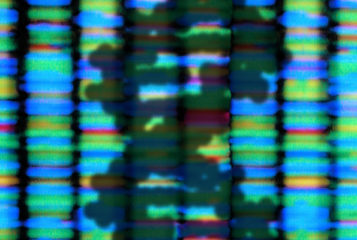The NHS has agreed a deal to make gene therapy available for children with spinal muscular atrophy.
The treatment, called Zolgensma, has a list price of £1.79 million, but the NHS negotiated a deal with the manufacturer to secure the drug at a 'significant discount'.
'This deal is a life-changer for youngsters with this cruel disease and for their families,' said chief executive of NHS England Sir Simon Stevens, 'Spinal muscular atrophy is the leading genetic cause of death among babies and young children, which is why NHS England has moved mountains to make this treatment available.'
Spinal muscular atrophy (SMA) is a genetic condition that affects one in 6000 babies born. It is a disease of motor neurons, the nerve cells that control voluntary muscles used for movement. Due to faulty SMN1 genes, motor neurons lack a protein called SMN and progressively die. This leads to muscle wasting, causing difficulties with movement, and in severe forms of the disease with breathing and swallowing.
The most aggressive type of SMA, type 1, affects children under six months old and leads to death or the need for permanent ventilation by two years of age. It is estimated that around 80 children per year could benefit from the new treatment.
Zolgensma contains a replica of the functional SMN1 gene which is delivered into the patient's cells by a harmless virus vector where it restores the SMN protein levels crucial for neuron and muscle function. The treatment only needs to be given once.
In clinical trials, children with both pre-symptomatic and symptomatic type 1 SMA were shown to benefit, with some children reaching life-changing milestones such as independent sitting and walking.
'The collaborative effort of all involved in the evaluation has made it possible to recommend a treatment which, at its list price, is the most expensive drug NICE has ever evaluated, allowing the lives of babies who might otherwise have died before their second birthday to be transformed,' said Meindert Boysen, deputy chief executive of the National Institute for Health and Care Excellence (NICE).
Sources and References
-
NHS England strikes deal on life-saving gene-therapy drug that can help babies with rare genetic disease move and walk
-
Spinal muscular atrophy: Gene therapy approved by NHS
-
NICE approves life-changing gene therapy for treating spinal muscular atrophy
-
NHS England agrees deal with Novartis for access to SMA gene therapy Zolgensma






Leave a Reply
You must be logged in to post a comment.